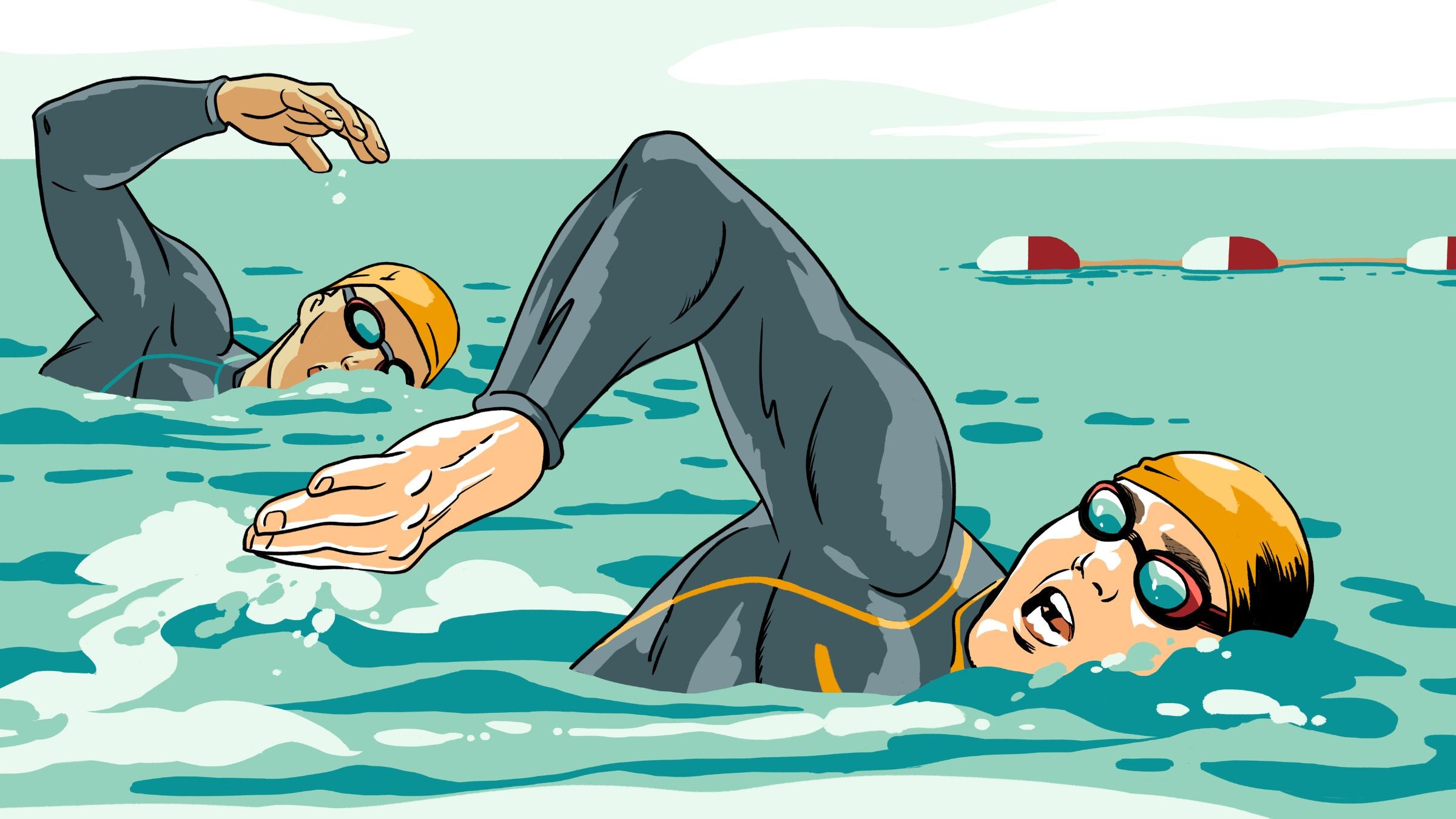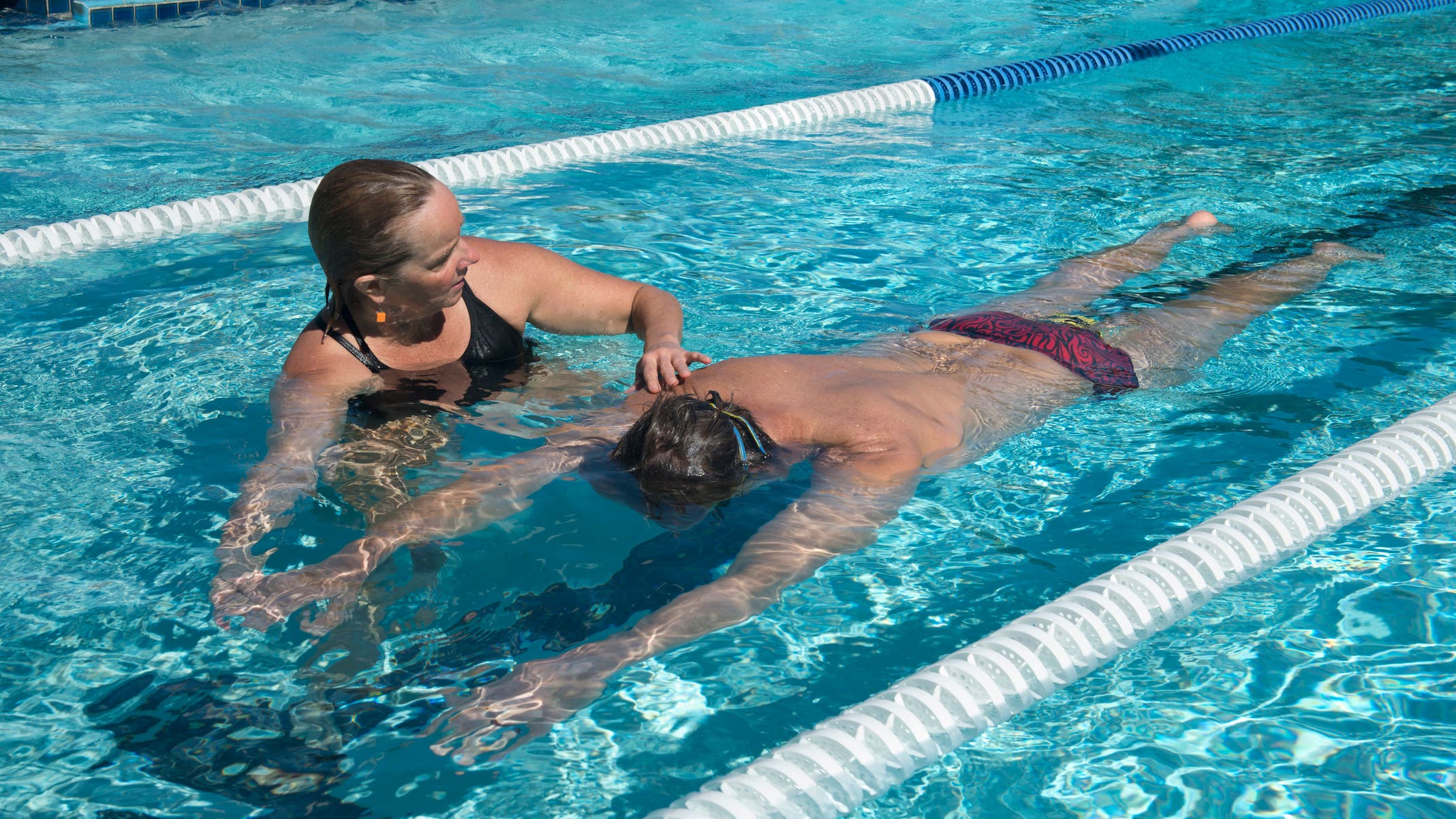A Beginner's Guide for Learning How to Swim for Triathlon

Learning how to swim for triathlon can be a daunting task, but also a very rewarding one! (Photo: James Boyle)
Learning how to swim for triathlon can be a daunting task, it is by far the most technical and challenging to learn later in life. But fear not, we’re here to help guide you through the water. As part of our series for beginner triathletes, Triathlete‘s Guide to Your First Triathlon, we’ve rounded up our top tips for learning how to swim for triathlon.
How to learn to swim as an adult
Learning how to swim as an adult isn’t just physically challenging, but can be laden with some very real fears too, and it’s often those fears that are the biggest barriers. Morgon Latimore is a U.S. Masters Swimming “adult learn to swim” instructor and Ironman University triathlon coach.
“When adults learn to swim, they bring with them a lifetime of experiences, which can be positive and negative,” he said. “This is one of the reasons why kids seem so fearless 99% of the time when they’re in the water—they have not yet been exposed to any negative experiences.”
RELATED: How to Encourage an Adult to Learn How to Swim
First, the fear of learning to swim for triathlon
For those who are afraid of the water, Latimore starts them out by facing those fears. In order to do that, find a swim coach or instructor who is patient, empathetic, and compassionate.
“Don’t set expectations,” he said. “Seek only to commit to the process.”
And although that process can look different depending on the athlete, if you’re working your way up to being unafraid, then Latimore recommends these steps:
- Once in the water, stay in the shallow end and begin with some basic water adaptation: putting your chin, mouth, face, half your head, then your whole head under the water.
- Blow bubbles on the surface, then underwater—for a few seconds.
- Holding onto the side of the pool, dunk your head under the water, blow a few bubbles, then come back up. Repeat three to six times.
- Still holding onto the wall, practice the streamline position, get used to your body floating on the the water. Gently introduce some kicking.
- When you feel comfortable, repeat this streamline/float without holding onto the wall, and start to add in some forward glides, practicing gliding into the wall.
- Next, it’s time to focus on breathing. Standing in the shallow end, take a breath with your face on the surface of the water and your head turned to your most comfortable side. Gently exhale as you turn your head into the water towards the bottom of the pool. When you turn to the side to inhale, turn just enough so to take your breath, with one goggle/eye coming out of the water.
- Next, progress to kicking on the wall, holding onto the wall with your arms outstretched, face in the water, eyes down, and turning your head to breathe when needed as you will when swimming freestyle.

Where to start when learning how to swim for triathlon
Of course, not everyone learning to swim as an adult has major fears to overcome—some people simply need to become familiar with the water and learn the right technique.
For those swimmers, Coach Megan Melgaard, who works with the Los Angeles-based Tower 26 triathlon swimming program, advises focusing on these key elements:
Body position
Focus on activating your core and maintaining proper head position with your gaze towards the bottom of the pool. Your head position should be neutral with your eyes looking down, not forward. Practice keeping the back of your head, hips, and heels at the surface of the water to keep the body “taut.”
Alignment
Maintain alignment with your hand entering the water directly in front of your shoulder. Pulling through the stroke, keep the arm moving through its respective “hand channel,” not allowing the arm to cross over your center-line or sweep too far out at any point.
Propulsion
Finger position, hand and wrist tension are critical propulsive elements. The goal is to create a firm, powerful force, grabbing onto the water to move it backwards, and propel you forwards. If the fingers are too far apart, the wrist is floppy, and/or adequate force is not applied to the water, your swimming will be compromised.
RELATED: The Four Pillars Of The Freestyle Swim Stroke
Common mistakes new swimmers make
As you get swimming, you’ll likely have some of the same challenges and make some of the same mistakes as other beginner swimmers—but that’s not necessarily bad! It means we can watch out for these form errors, many of which are related:
Sinking legs
When your legs drag lower than the rest of your body it creates drag and slows you down. This is often caused by not having your head in the correct position.
Poor head position
New swimmers often hold their heads up too high, which then causes their hips to drop and legs to sink.
Body misalignment
This happens most often when your hips snake or swing as you swim, which is often caused by the over-rotation of your head as you turn it to breathe.
Of course, there’s no easy way to know if you’re making mistakes if you don’t have a coach, instructor, or some form of live feedback. Even if you have a coach, getting someone to take video of you can be incredibly helpful.
When it comes to learning how to swim for triathlon, practice makes perfect
Once you’ve mastered the basics, it’s time to practice. Tower 26 founder and head coach Gerry Rodrigues has two basic steps that he expects beginner swimmers to master before focusing on technique and fitness:
- Being able to breathe to the side and keeping your head in the water.
- Making sure your freestyle arm stroke is an underwater propulsive movement, catching and pulling the water, followed by your hand exiting the water and then returning to its entry point.
If you can do that, then you’re ready to start working on getting faster! Find more drills, guidance, and workouts here.
See also:
- A Complete Guide to Triathlon Swimming
- How to (Finally) Become a Faster Swimmer
- A 4-Week Training Plan to Help You Swim Better and Faster
- Video: New to Open-Water Swimming? Here’s Your Crash Course
- Video: Key Skills You Need to Become a Successful Open-Water Swimmer
- Video: These Advanced Skills Will Take Your Open-Water Swimming to the Next Level